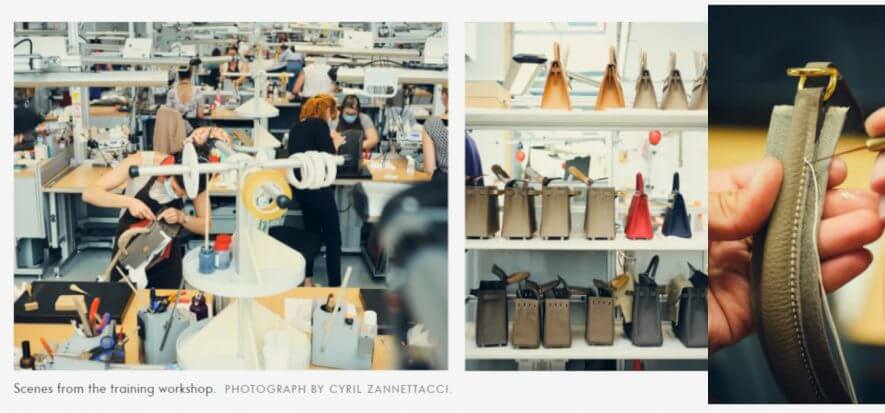“Craftsmanship is based on the transmission of knowledge,” says Vice-President Olivier Fournier. And this explains why every time Hermès opens new production sites (a circumstance that has been repeated with some frequency in recent years), it simultaneously recruits and trains new generations of employees. This is a very expensive activity in cultural terms, because it aims to transform people (who are not) into skilled craftsmen. But also in economic terms, because, as the top management of the maison recognises, in order to make the positions in the company attractive, the lever of the contractual conditions is also exploited
How Hermès recruits and trains employees
The top management of the French maison have granted two interviews on the subject to Vanity Fair and Vogue Business. To which they opened the doors, respectively, of the Saint-Vincent-de-Paul leather goods factory, 180 artisans (which will become 250 when it becomes fully operational), and Maroquinerie de Guyenne (300 employees). For each new opening, selection is made through vocational training schools or employment agencies.
Once the most suitable candidates have been identified, the 80 Hermès master trainers (a position that takes eight years to attain) take on the task of training a new generation of craftsmen. The course involves 18 months of teaching activity. Divided into two phases: the first is frontal lessons and the second is “at the desk”, where the new recruits put their new knowledge into practice under the watchful eye of one of 200 designated tutors.
The contract
Speaking to Vogue Business, CEO Axel Dumas, claims that the training programme is an ode to manual labour. “You don’t learn to perform a task, but a craft profession”. Hermès’ top management, however, prefers not to go into detail about the compensation paid to trainees and staff. They limit themselves to saying that the initial salary is “well above” the French minimum wage, and that the medium and long-term remuneration includes shareholding plans. The goodness of the treatment, Fournier concludes, is recognised in the fact that 25.8% of staff in France have more than 15 years’ service.
Read also:











